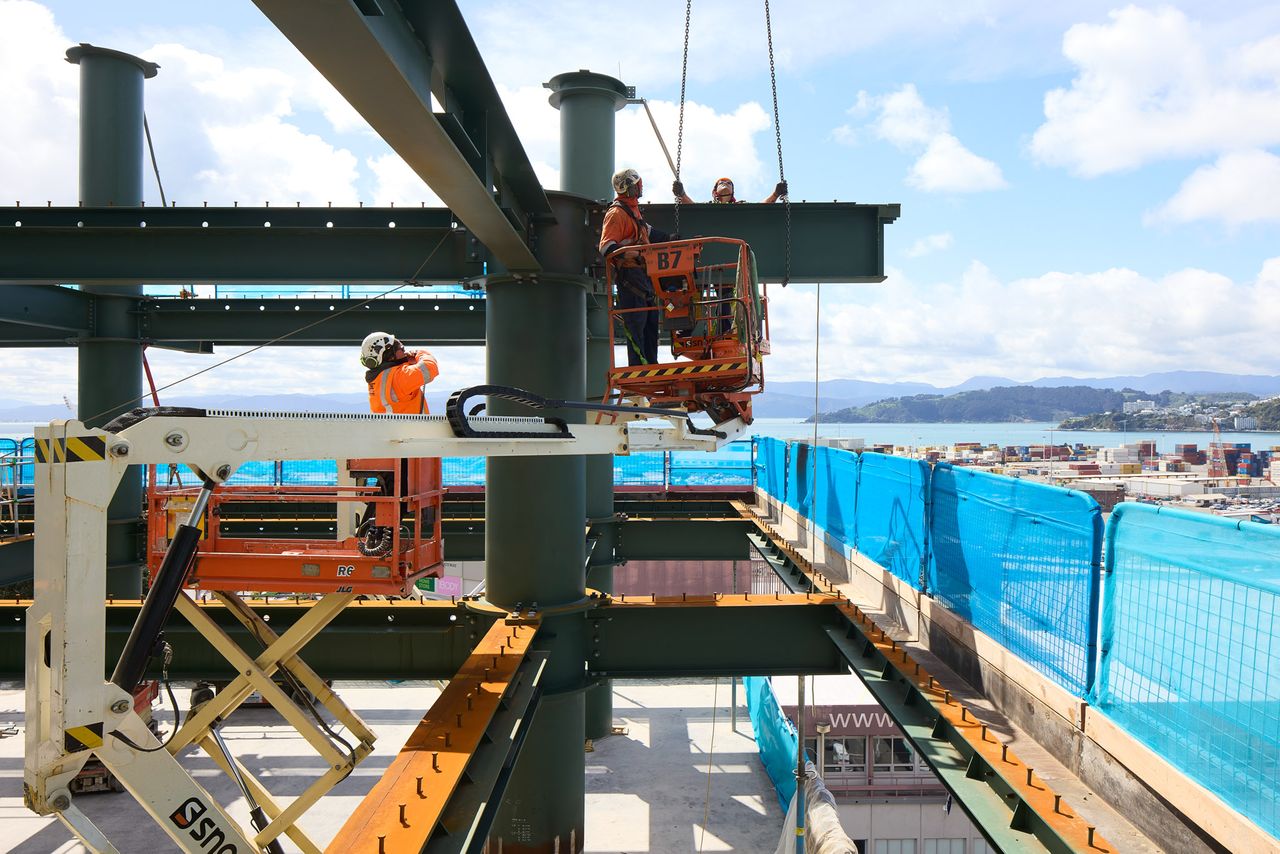News & Insights
Is Standardisation the Way Forward for Design and Construction in New Zealand?
Date
- 2025 July

Later this year, IKEA is set to open its first store in New Zealand, bringing its globally successful model of affordable, ready-to-assemble furniture. Founded in Sweden, IKEA has thrived by developing low-cost designs in all aspects its supply chain to deliver stylish, functional, and cost-effective products. While the assembly of a new set of drawers might seem a long way from the scale and complexity of a construction project, there’s something to be learnt from Ikea’s approach. Through increased efficiency of design and construction practices, there are opportunities for the construction industry to address critical challenges, which include labour shortages, material costs, health and safety issues and the ever-increasing sustainability challenges. These challenges, while significant, also present opportunities for innovation and smarter building practices.
Design Challenges
Design consultants in New Zealand’s construction industry face a multifaceted set of challenges, including ever-changing regulations, growing demand for sustainable design and successfully integrating new BIM technologies. Managing this wide range of challenges requires flexibility, innovation, hands-on construction experience, and a commitment to continuous learning. However, this is extremely difficult given that the market is fractured and specialised.
A good starting point is getting the design component right, as this is critical for the overall success of the project. As RCP Managing Director Jeremy Hay says, “90% of a project’s success is achieved before the shovel hits the ground.” Unfortunately, budget constraints, limited design resources and unrealistic project timelines often prevent the creation of the detailed documentation required. To consistently deliver projects that offer clients greater certainty, standardising design could be an alternative approach. Through standardisation, projects could benefit from economy of scale, with high quality designs produced, using a fraction of the resources.
The Consenting Process
The consenting process complicates the design process, adding uncertainty to timelines, required changes, and additional costs. The complexity is amplified by the number of stakeholders involved. For example, securing building consent for a medium-sized project today requires approximately 30 interfaces, compared to just a dozen in the 1990’s. Areas such as passive fire, deflection heads, seismic restraints and acoustic requirements, to name just a few, are specialisations that are now required, but were not strictly enforced in the past.
The skills required to bring all the pieces together often requires the wisdom of an individual with decades of experience whilst having the dynamics and skills of a young tech guru. This ask is bordering on the impossible, hence the need for a different approach. Standardising certain aspects of design could simplify and speed up the design process and streamline regulatory approvals.
Why is Standardisation Needed?
Currently, the nature of the process creates a huge amount of variation. Architects, each with their own design and documentation formatting style, produce very different looking submissions to councils and contractors. Similarly, council regulators have differing review methods and feedback approaches which adds to the inconsistency. When multiple designers and regulators are involved in a project, the resulting documents can vary significantly, requiring considerable effort to reconcile.
This variation makes it challenging for subcontractors to accurately price and tender for work and continues to complicate things downstream during construction. In addition, each contractor, subcontractor, quantity surveyor, building services and structural engineer, each with their own approaches and idiosyncrasies, introduce further differences, amplifying the differences in final outputs.
If there was more consistency in how plans were presented, reviewed, and revised, everyone involved could work more efficiently. Unfortunately, that’s not the case, making it hard to build momentum or learn from past projects.
An Approach to Standardisation in Design
Standardisation can begin with a simple design template that helps both with formatting and with integrating key processes during the design phase. This can lead to cost and time savings, more consistency, smoother project delivery, and easier compliance with regulations. However, these benefits need to be balanced against the need for flexibility and innovation.
To strike a balance, the standardisation process could involve modular BIM templates in the first instance that allow for some customisation based on project type, client needs, and site conditions. This would allow clients and downstream parties to benefit from the efficiency of regularly receiving standardised designs templates while still maintaining enough flexibility to meet specific project goals.
Additionally utilising BIM and a library of preapproved façade and construction options, the design processes could be streamlined, and council approvals simplified. Each BIM layer would provide standardised designs including regulatory and construction details, to provide consistency throughout the consent and construction stages. Predefined options would also enable mock-ups, allowing clients to visualise building façades and construction methods while providing more accurate cost and timeline estimates.
Balancing Efficiency and Flexibility in Standardisation
One consideration is that standardisation may reduce material options, restrict new products from entering the market, and limit design flexibility. To address this issue, both BIM and the consenting system would need avenues for cost effective review and updates to enable new innovations or competitors to be included.
For projects prioritising creativity and originality, bespoke solutions would remain an option, thereby ensuring design and construction innovations continue to flourish.
Enhancing the Construction Process Through Standardisation
Just as standardisation can improve the efficiency of the design process, it can also enhance the construction process. By integrating design templates with construction templates, communicated through BIM, projects could benefit from preapproved producer statements, standardised construction monitoring procedures, and streamlined construction workflows. Involving construction professionals early in the design phase would ensure that key construction details are incorporated upfront, paving the way for more efficient construction processes and fewer issues later in the project.
The involvement of all stakeholders would be vital in creating templates that suit the NZ environment, can be appropriately adjusted to meet local needs, and are workable by all parties in a project.
Templates need to allow for industry wide lessons learnt, local adaptations, site-specific considerations, and cultural relevance, to avoid the pitfalls that face many generic designs or templates.
The First Steps:
Including input from all stakeholders, a combination of top-down and bottom-up approaches would ensure broad endorsement of standardisation while addressing the specific needs of each stakeholder.
A top-down approach would require support and collaboration from several organisations and groups:
Ministry of Business and Innovation (MBIE) who manage the NZ Building Code.
Individual councils throughout the country who determine the approval processes for their regions
BIM Acceleration Committee and BIMinNZ who maintain and update BIM in NZ
Industry bodies (including NZ Institute of Architects, Engineering NZ, NZ Construction Industry Council) who can facilitate dialogue with their members.
A bottom-up approach would involve working with a range of construction stakeholders such as:
Construction companies
Suppliers
Consultants
Project Management organisations
A multi-disciplinary working group representing the construction industry and dedicated to the standardisation vision could lead the process. Advances in AI may provide a unique opportunity to analyse and review vast volumes of New Zealand projects, helping to develop appropriate and effective standardised options.
Given the industry's complexity and siloed nature, the project would need to be iterative, as sweeping changes are unrealistic. However, a shared vision could drive incremental improvements, enhancing efficiency, reducing costs, and streamline the consenting process for a more efficient and productive construction sector.
Addressing Industry Challenges Through Standardisation
New Zealand’s construction industry faces many challenges such as labour shortages, rising costs, and regulatory complexities. These pressures highlight the need for innovation and streamlined processes. Standardisation offers a way forward, particularly for smaller or less complex projects, by improving efficiency, reducing costs, and enhancing project outcomes.
Balancing efficiency with flexibility is essential. Modular templates, supported by BIM, can streamline designs while allowing local adaptations to meet diverse needs. Collaboration among stakeholders is key to creating workable solutions that benefit the entire industry.
In summary, when used appropriately, standardisation has the potential to replicate concepts from the Ikea model, thus improving the status quo by improving efficiency, reducing costs, and mitigating risks. However, it should be approached carefully with attention to flexibility, client needs, a range of stakeholder perspectives, and consider the evolving demands of the construction industry.
I’d love to hear your thoughts on this topic. If you’re interested in exploring it further, let’s connect and continue the conversation.


